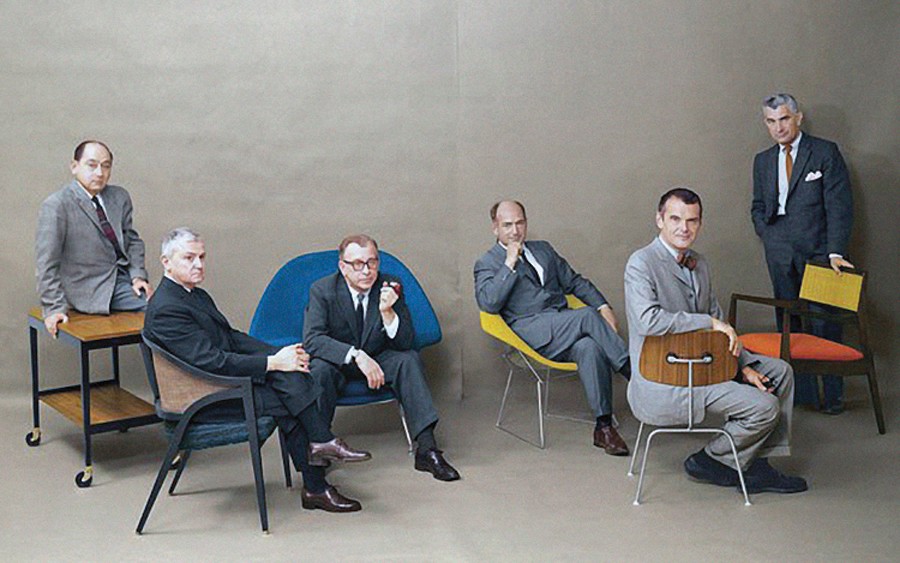
In his 63 years, Harry Bertoia demonstrated a prolific output of creativity. He was instrumental in swelling the wave of modern art through visual, practical, auditory and tactile means. Finding creative outlets in furniture design, jewelry, sculpture and public works of art kept him busy until his death in 1978. No matter what the medium, his work was intended to be experiential.
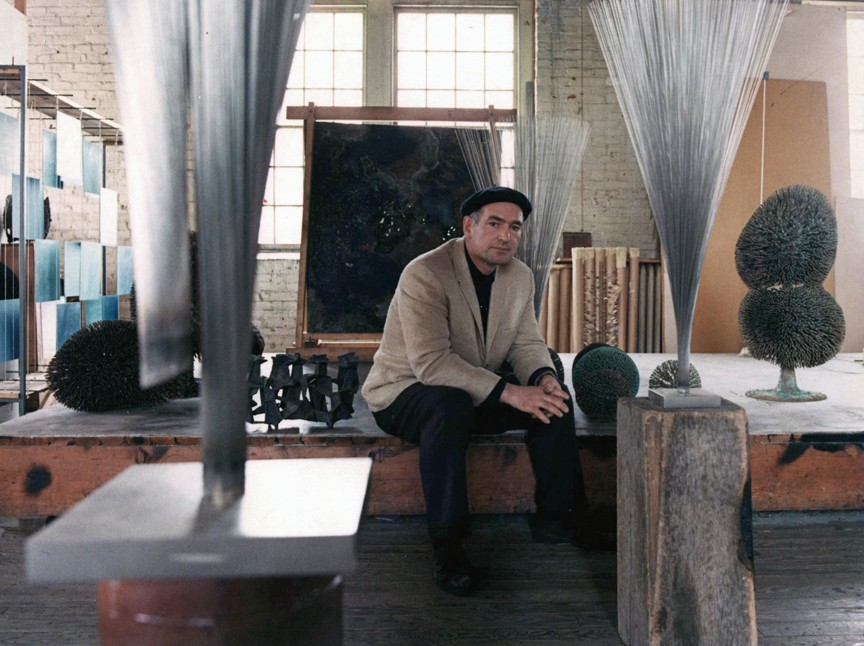
Furniture Design
Bertoia’s initial designs were influenced by Charles Eames, and others in late 1940s California. His innovations and hard work, specifically the development of the flexible plywood seat with tubular frame, were key to the development of the Eames chair, for which he never received any credit.
He worked with the Navy to develop ergonomically sound seating, which fascinated him. “I appreciate a slight yield, lightness of weight, some motion if possible… There are certain motions we go through – we like to lean back – and if the chair’s adaptable it responds and it’s almost like wearing a comfortable coat; you really don’t know you have it on.”
During the 1950s most chairs were being produced in wood. Bertoia’s furniture was innovative. He used welded wire to create forms that showed the fluid movements he loved. He produced the designs and the molds used in mass manufacturing.
He was asked by former classmate Florence Schust Knoll to work with her and her husband, and with urging from his wife, Bertoia accepted. They moved to Pennsylvania and Bertoia received credit for all his creations from that point forward. Knoll International produced the first Bertoia chairs in 1952 and continues to produce them today.
Public Works
Bertoia was responsible for producing over 50 public works throughout the country and internationally from the 1950s through the 1970s. The General Motors Technical Center’s 36’ long metal screen launched the sculptor on a path of success.
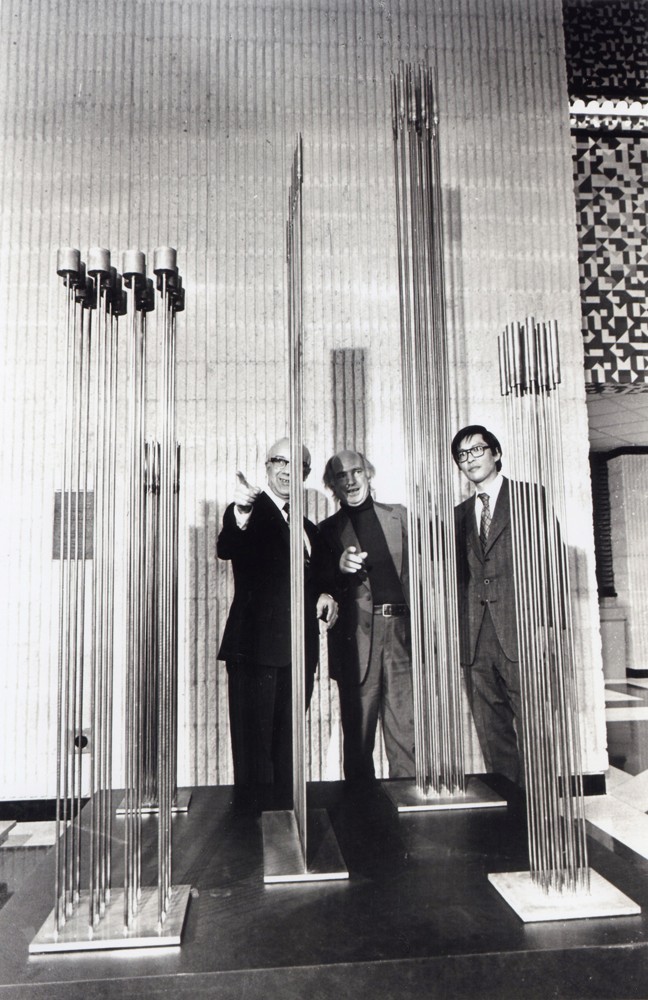
Sculpture
An education in welding at Santa Monica City College in California in the late 1940s lead to tens of thousands of Bertoia sculptures. He rarely signed his work as he believed his gift to the universe needed no man’s mark to be appreciated or interpreted.
Jewelry
World War II made metal scarce so Bertoia dabbled in jewelry design making bracelets, necklaces and rings. Many small pieces were precursors to larger sculptures. The bulk of his creations were produced from the late 1930s to the early 1940s, with some rare pendants in the 1970s.
Bertoia influenced the MCM aesthetic through many mediums, and that influence continues today. Aren’t we the lucky ones?

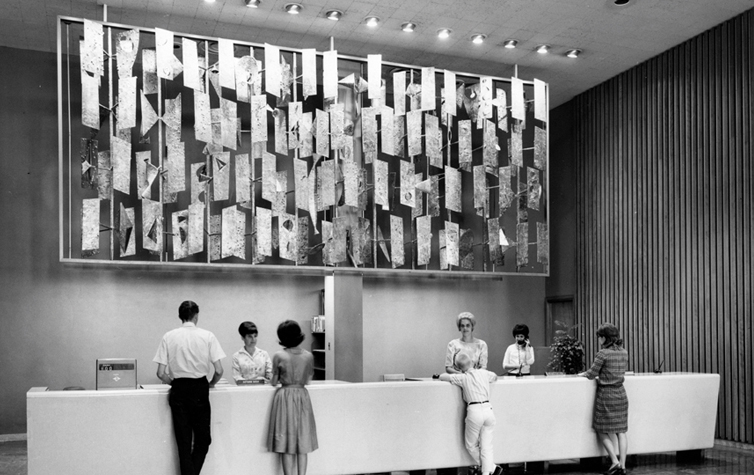
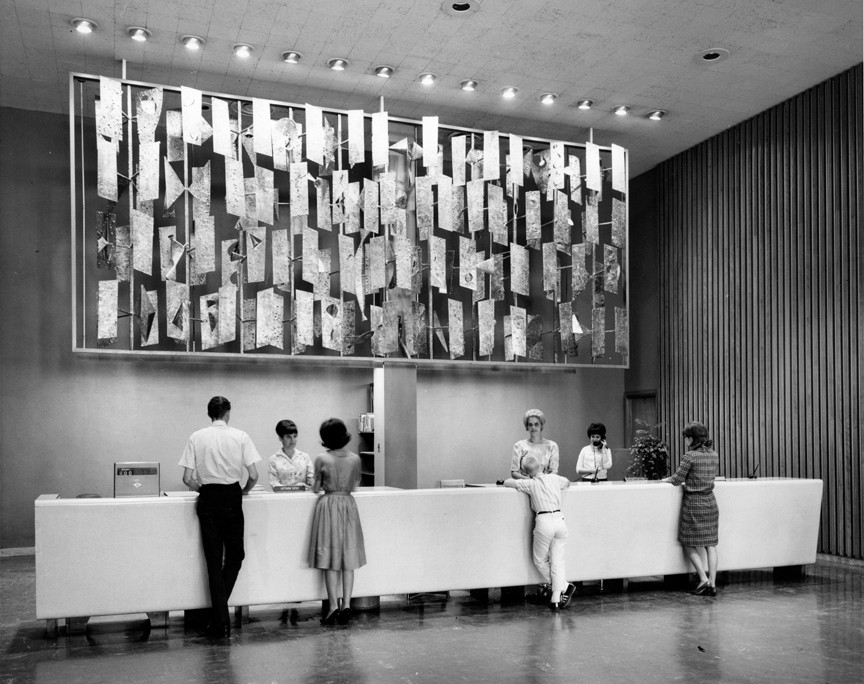












1 comment